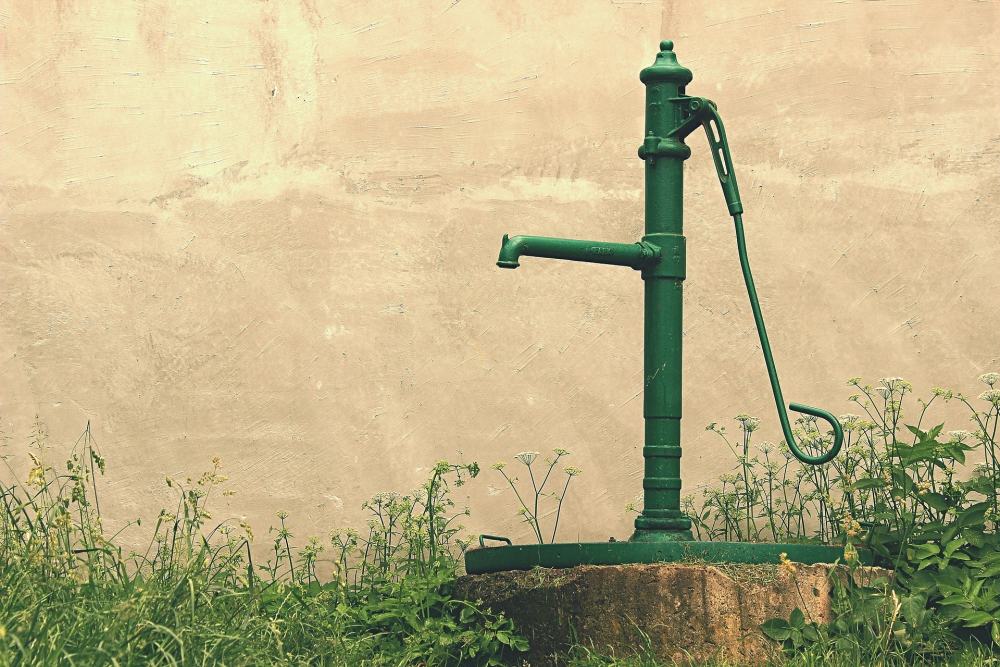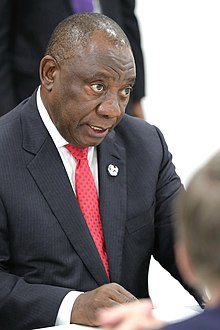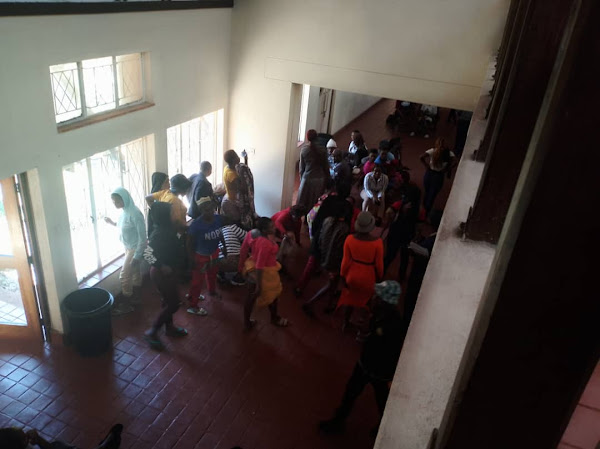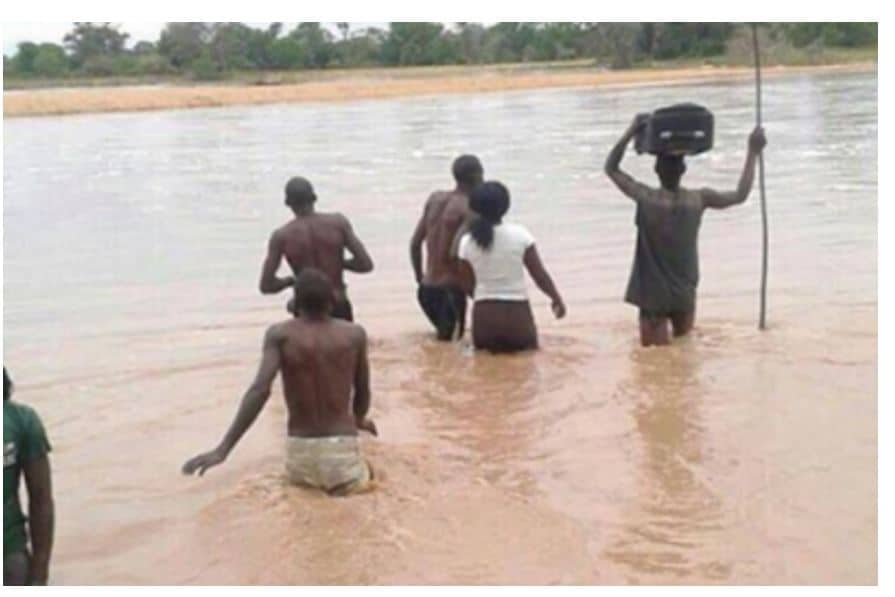Zimbabwe can enhance its food security by investing in cheap water-extraction technologies
Lovemore Lubinda|zwnews.com
Water is life-Shamva-based small-scale farmer Weston Muza transformed his community’s fortunes when he recognised this essential fact and harnessed existing water resources that have not been accessible until now.
Early this year Muza bought a manual irrigation pump that has allowed him to exploit the water from the nearby Nyarukunda River. Muza’s two-acre plot is 500m from the river and because it is all irrigated he grows crops all year round.
As a result, he has now secured much of his community’s food needs – and transformed his own family’s fortunes too, by selling his crops locally.
Muza lives in Musiwa village, but he has also helped other nearby communities such as Bradley Growth Point and Madziva Township whose residents now have access to cheap, fresh produce instead of travelling to towns like Mt Darwin and Bindura, the provincial capital, to buy much of the food they need from expensive shops.
This is just one success story about how simple, affordable irrigation technologies can help Zimbabweans better exploit available water bodies to ensure food security (Sustainable Development Goals [SDGs] numbers 2, 9 and 12).
Muza explained that while he is not able to sell all his fresh produce as he would like, his family has learnt that drying vegetables has proven to be a good way to preserve them and avoids wasting the food produced.
“In some instances, people may not be able to buy because they lack disposable incomes, more so in a rural setting. So, in order to avoid running our business at a loss, we, as family, dry (kufusha) the produce that is not sold fresh and sell it later.
“We have even discovered that a lot people prefer mufushwa to fresh vegetables,” he added.
He believes most of the rivers and dams in Shamva district’s Ward 7 are not being fully exploited by the 11 villages in the area. “We have a lot of small gardens but people still fail to maximise on the blessing as watering with buckets is a serious limitation,” he said.
As evidenced by Muza’s success story, research has shown that with proper policies, political will and careful planning, food security can be improved in the region by fully exploiting available water bodies.
A 2005 study by various state universities entitled Temporal and Spatial Variability of the Hydrology of Semi-Arid Zimbabwe and its Implications on Surface Water Resources, revealed that many areas of southern Zimbabwe under-used available water bodies.
For example, Francis Themba, who participated in the study, pointed out that almost 97% of the loss from Mutangi Dam (Runde catchment) was through surface evaporation, with only 3% being used productively, split approximately as 2% garden irrigation and 1% animal watering.
Themba also pointed out that it was important to ensure that local communities are able to monitor available water resources easily to determine safe rates of water use.
“This will enable the community to make informed decisions such as the percentage of the garden that may be irrigated safely, which crops to grow, and when to stop using the dam water as it approaches the reserve level,” read part of Themba’s paper.
Muza’s village headman, Joshua Musiwa, said generally, the region is endowed with rivers that flow all year round, but people are restricted from fully exploiting the water because of a lack of water-extraction technologies that is pro-poor.
“Only for this year have we registered low river flows because of the drought. But we are grateful that none of the rivers in this ward have dried up completely. At the moment those with pumps have been ordered to stop using them until the levels improve,” said Musiwa.
For Muza the recent order to stop using pumps is a blow that has forced him to shelve his expansion plans. But he believes it is a necessary evil to allow rivers to replenish depleted dams and provide an equitable supply of the little water available to all residents.
In the meantime, he has resorted to the laborious way of watering using buckets, which has resulted in a reduction of the area under irrigation. But he views this as a temporary problem and has his pump, pipeline and irrigation system in place for when the ban is lifted. For example, even during the rainy season, he will be able to provide his crops with a consistent supply of water during dry periods to ensure healthy crop development.
Ward 7 Councillor George Munangatire agreed with Muza and headman Musiwa that climate change and a lack of low-cost water-extraction equipment have affected the ward and people’s ability to grow enough food. He urged the government to invest in the research and development of water availability and irrigation technology by providing incentives and assistance to tertiary learning institutions, especially those focusing on agricultural training and development.
“To make matters worse, we have only one dam in the area, located in Ward 6, and only those living close enough benefit from the water there. As you know, one cannot fetch water on one’s head to irrigate a garden that is located several kilometres away,” he said.
Munangatire said government still needed to prioritise dam-building in its budgets: “If poverty is to be minimised, the government should ensure that each ward has a dam, particularly in rural areas, where most people are poor because of a lack of economic activity,” he added.
Environmentalist Charlene Hewat, who is chief executive officer at the environmental watchdog organisation, Environment Africa, says the country is unlikely to benefit from its extensive system of dams and rivers if it continues to disregard its environmental policies and laws.
“The country has brilliant laws and policies on environmental protection but lacks proper application,” she says referring to how the country’s wetlands are being depleted because they are being parcelled out by government and local authorities for infrastructural development.
“We are destroying the very thing that gives us life. We want development. However, the question is, at what cost?” she queried.
Agriculture, Mechanisation and Irrigation Development Minister, Joseph Made, agreed that Zimbabwe has perennial water sources that are not being fully exploited and believes that innovations in irrigation is key to the attainment of food security.
Speaking during the launch of two manual irrigation pumps in March this year, the minister said simple and affordable technologies are the way to go if small-holder farmers are to be empowered. The minister added that it was important to rehabilitate existing irrigation schemes and promote innovation in affordable water-drawing technologies.
“As for manual irrigation pump technology, it is simple and enables farmers to make use of vast open water sources in the region, it is ideal for those in rural areas as they do not need electricity or fuel to function. This technology is very much in line with the ZimAsset blueprint clusters and SDGs,” minister Made said.
The minister pointed out that where interventions like manual pumps, have been employed by farmers in sub-Saharan Africa, the yields have been higher than in rain-fed-only areas.
Zimbabwe National Water Authority (Zinwa), chief executive officer Dr. Jefter Sakupwanya, admitted that a number of dams are being under-utilised, though he wasn’t able to provide details. He also believed there was a need to invest in mechanisation.
“A number of large dams including Manyame, Biri, Mazvikadei, and Mwenje were being under-utilised. Zinwa has released manpower to assist on various committees and assess the condition of the dams and the work required for maximum water utilisation,” he said.
Dr Sakupwanya also spoke of challenges posed by climate change, stream bank cultivation, pollution and poor waste management. He said the authority has embarked on a nationwide de-silting exercise and was also carrying out awareness campaigns to educate people about sustainable water use.
Meanwhile, the Food and Agriculture Organisation (FAO) estimates that of the 12,430 dams in southern Africa (excluding South Africa) covering an area of 126,089 ha, 10,747 (117,662ha) are situated in Zimbabwe. Thus, 86% of all the small water bodies (SWBs) and 93% of their surface area lie in Zimbabwe, which forms only 6.8% of the geographic area in the region. This high concentration of SWBs in one country can be related to water resource availability and its seasonality in the country.
In 2016 the FAO admits that although the exact inventory on irrigated areas in Zimbabwe is not available, the present data shows water drawn for agriculture was far less compared to its availability. It says of 150,000ha under irrigation in 2014, less than 30 percent of the potential water available was utilised. Zimbabwe has 15.9 million hectares of arable land of which 150,000 is under irrigation – that’s less than 1% of all cultivated land, a poor record for a country so well endowed with water resources.
Recent data from Zinwa also indicated that many of the country’s dams were still more than half full despite the devastating drought.
Despite its semi-arid climate, Zimbabwe is one country that is evidently relatively well placed to meet its future water demands… But it urgently needs the political commitment to set the development and management of its existing and future water resources as a national priority to ensure access to water for all of its growing population.
In the SADC region, water demand is projected to rise by at least 3% annually until 2020, a rate equal to the region’s population growth (SARDC, lUCN, SADC, 1994). As a result, the rate of demand is estimated to increase by 2025. Up to 16% of Africa’s population (230 million) will be living in countries facing water scarcity, and 32% (460 million) in water-stressed countries (Johns Hopkins, 1998).
Zimbabwe is one of these affected countries both in terms of water availability and inadequate development of appropriate water-extraction resources. Already, the rising demand for increasingly scarce water in the drier parts of Africa is leading to growing concern about future access to water.
UN WATER/ AFRICA, is a United Nations agency which aims to assist poor communities to develop the equitable and sustainable use and management of water resources, states that the scarcity of water in the region is not only due to natural phenomena, but also to low levels of development and exploitation of available water resources against a growing demand for it.
According to its report entitled Vision 2025, looking at the continent’s water needs and how to meet them in the next 20 years, constrained financial resources is the prime reason for Africa’s low level of water resource exploitation. “There is need for a policy shift, financing, cooperation and sustainable management of water resources. Scarcity is likely to increase in significance in the future with growth in economic activities both in the agricultural and the industrial sectors,” reads part of the report.
Even with its current poor performance, agriculture is the largest user of water in Africa, accounting for about 85-88 percent of total water use (UNEP, UNDP, W13, 1998). Yet only 12 million hectares 6% of the total cultivated area is under irrigation. This is believed to be due, in part, to the very low levels of technology and efficiency in agricultural production.
zwnews.com














